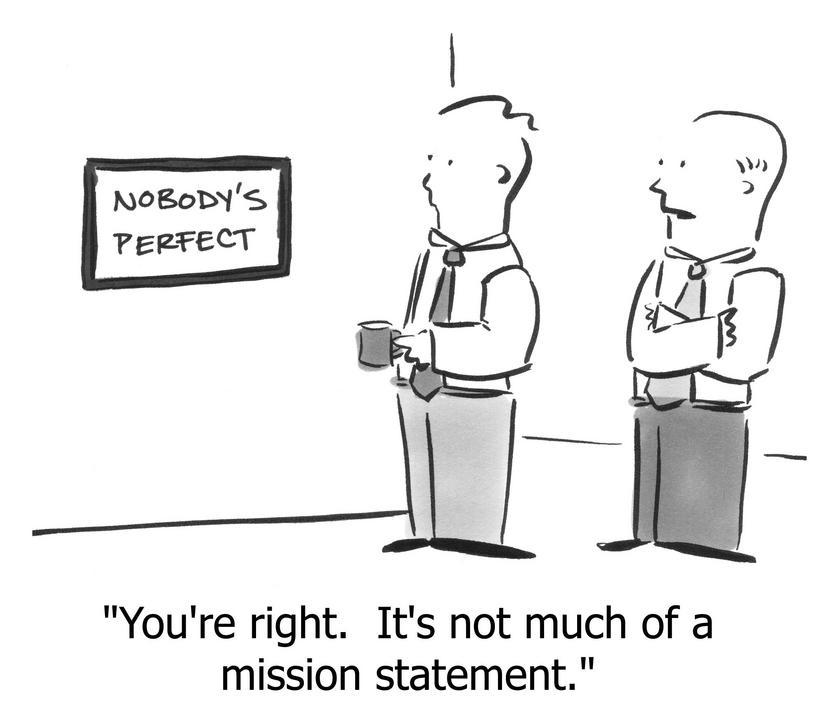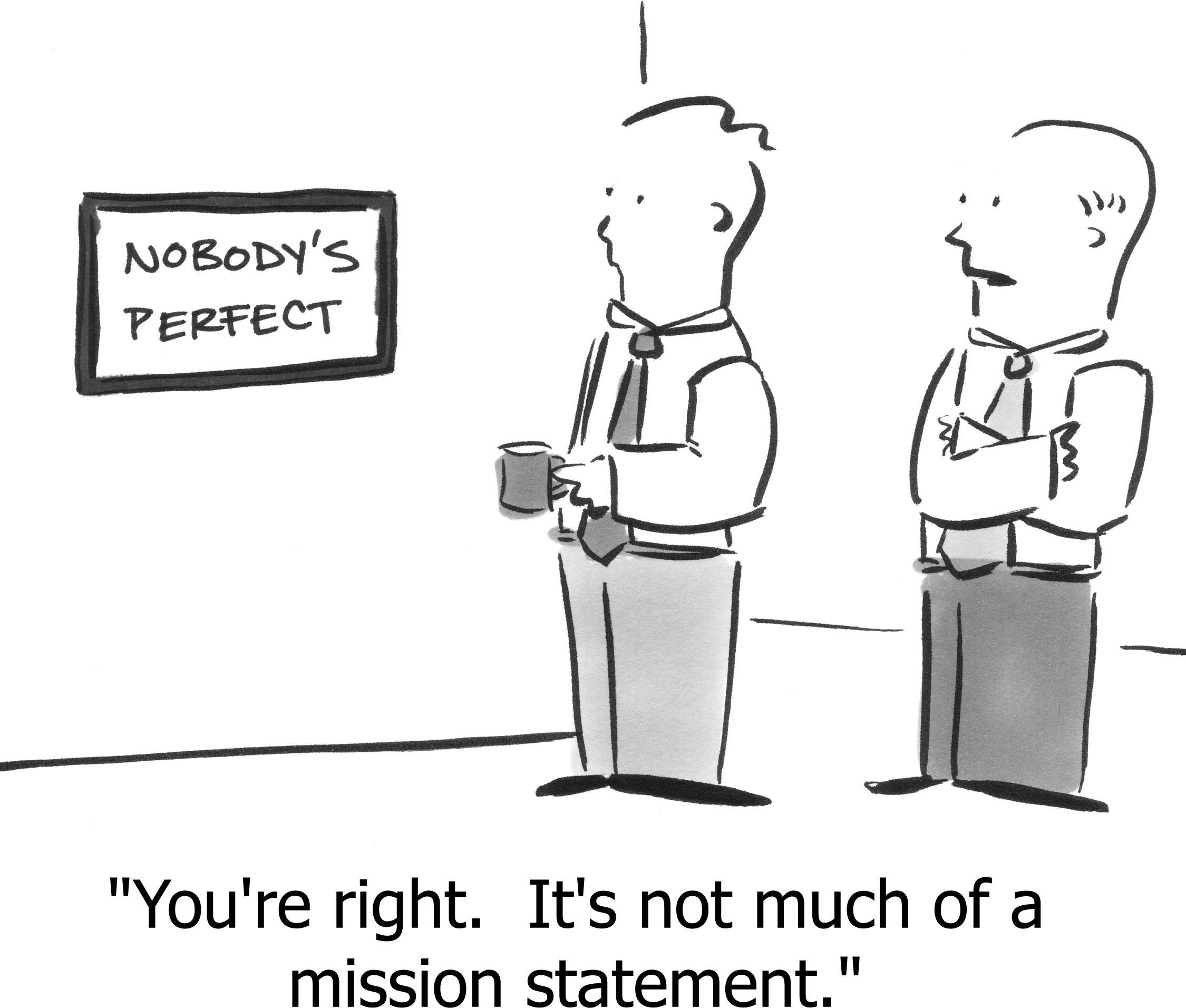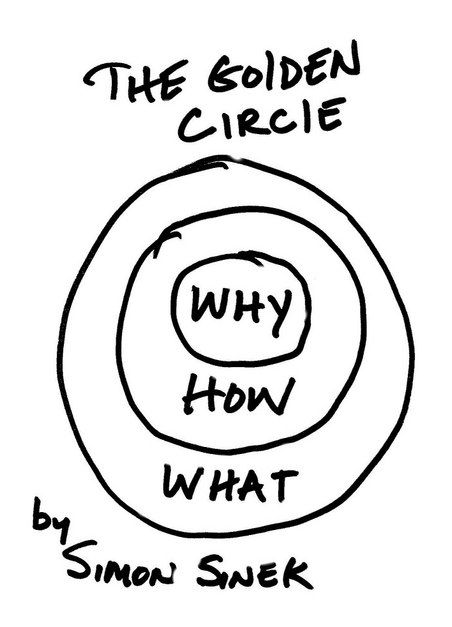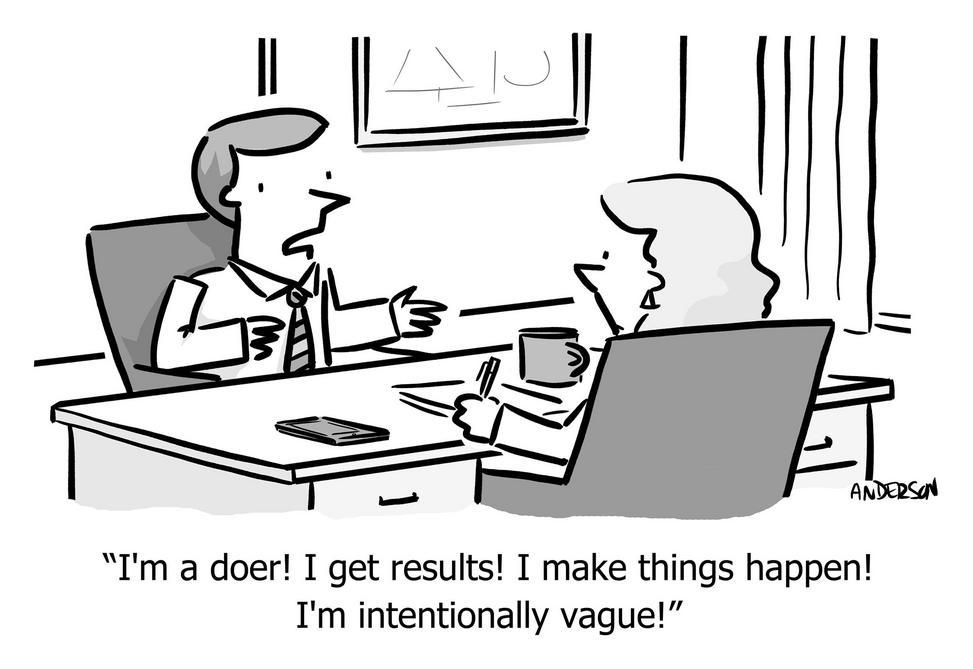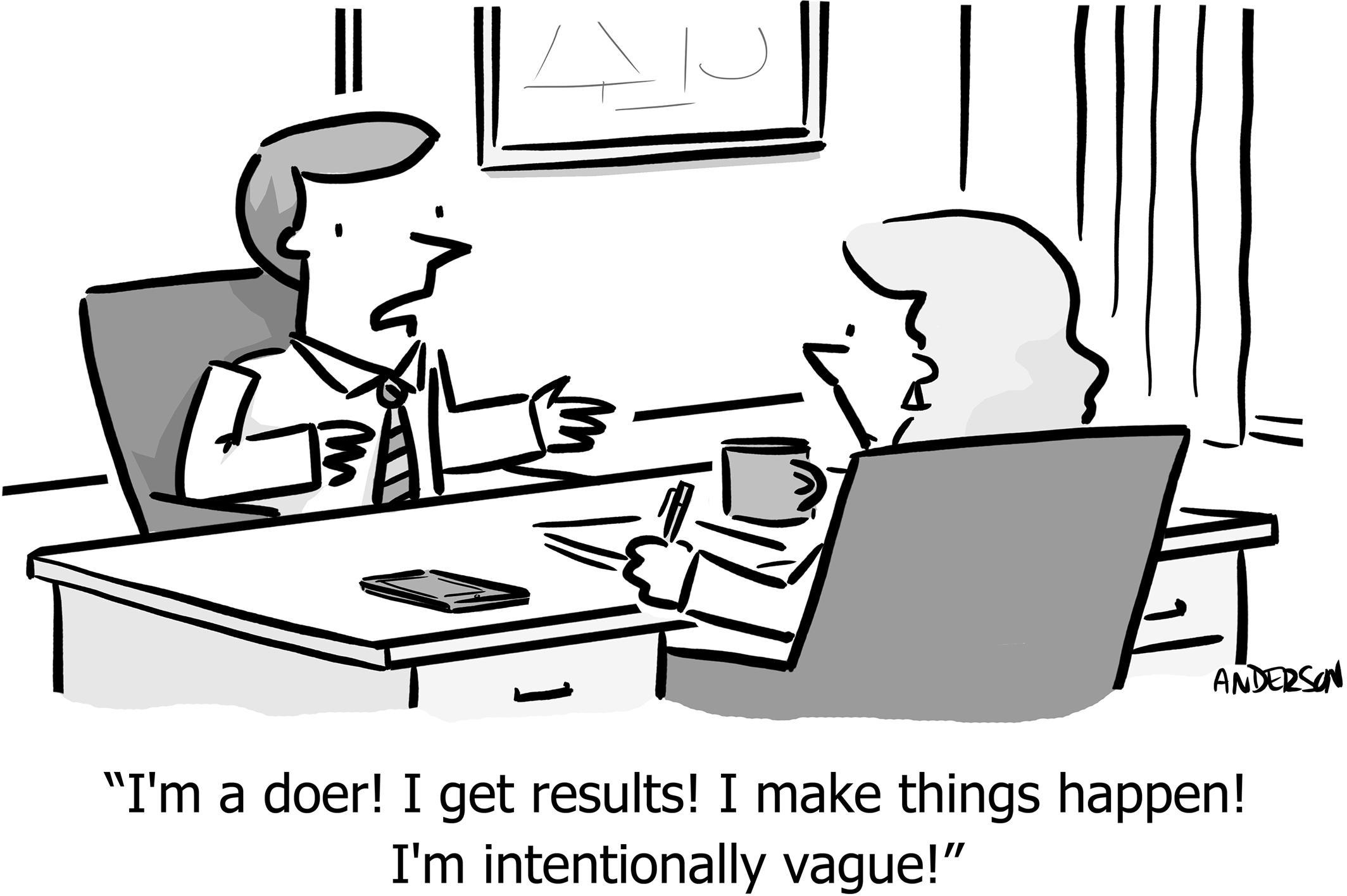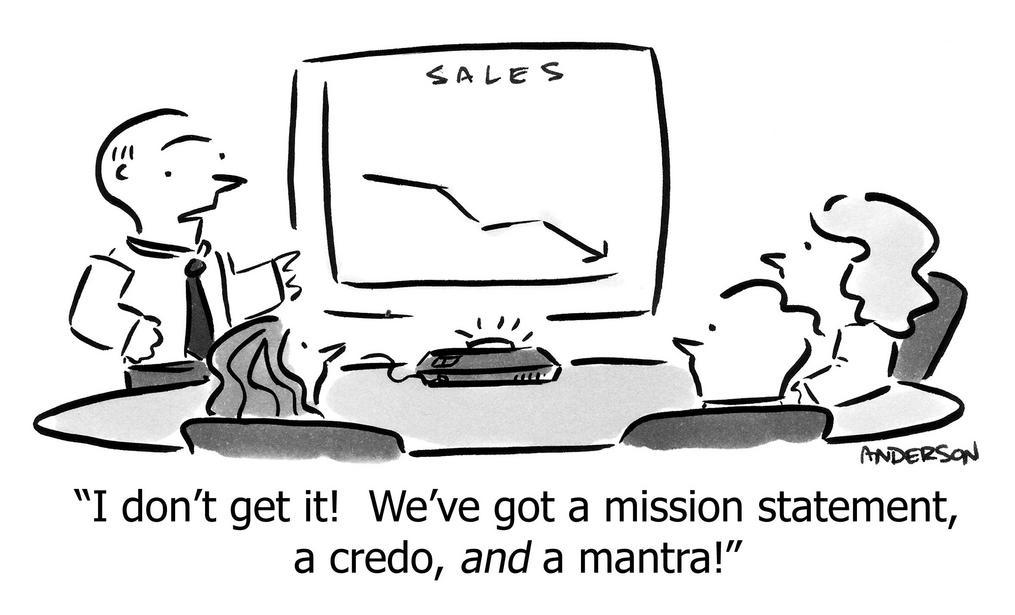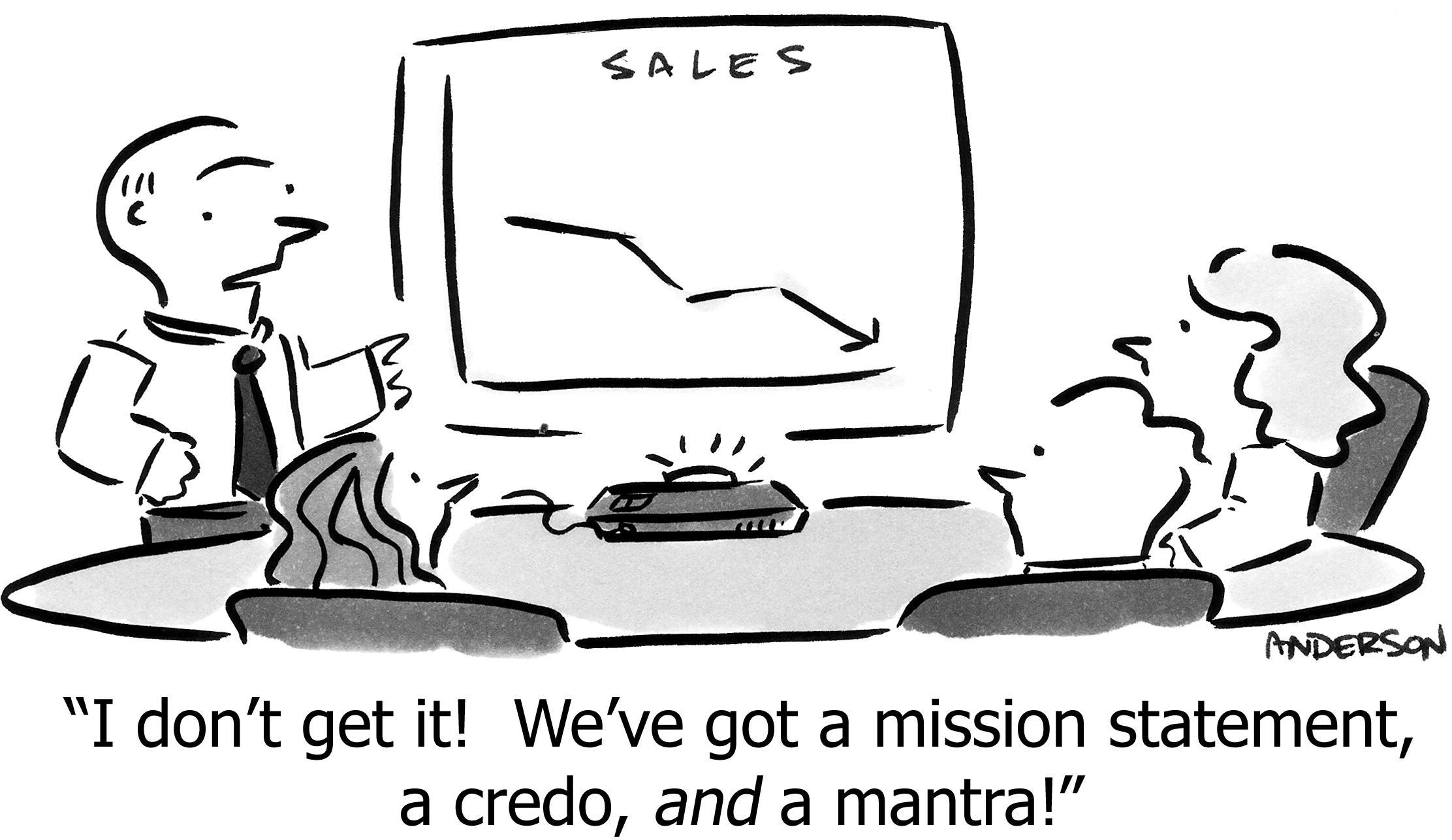Mission, Vision, poTAYto, poTAHto
Who cares?
Mission, vision, purpose, BHAG, North Star. Are they useful, or academic nonsense?
For many of us, these are highfalutin’ terms that have no role in early stage startups, because we’re too busy making stuff and realizing that customers actually wanted something else. By the time the company is large, there are teams of people—probably in marketing—carefully sculpting these things as sentence fragments in large serif fonts on “About Us” pages that no one reads and no one believes. And by no one, I mean not employees, not customers, and not investors. Phrases that sound grand but are just grandiose.
How can these terms matter, when pundits can’t even agree on their definition? Take “mission.” One interpretation is like “missionary”—our higher purpose, something bigger than ourselves, which we are helping to bring about. So Patagonia’s mission is “to save our home planet,” though what it does is sell outdoor clothing. Or Tesla’s mission is “to accelerate the world’s transition to sustainable energy,” though what it does is sell cars, followed by selling batteries and solar panels. Or Coca-Cola’s mission is “to refresh the world in mind, body, and spirit,” but what it does is sell barely-potable chemicals and containers of said chemicals embedded in carbonated water. Well, two of those three companies are at least fulfilling their mission.

The other definition of “mission” is nearly the opposite: Your current execution goal. An army battalion has a mission to conquer and defend a region. A starship has a five-year mission to explore new worlds while not interfering (wink wink) with new life and new civilizations. McDonald’s mission is “to be our customers’ favorite place and way to eat and drink,” which is about themselves and how customers regard them rather than something bigger than themselves. FedEx’s mission is “To produce superior financial returns for its shareowners [sic] by providing high value-added logistics, transportation and related business services,” which is unabashedly about stock price and summarizing the service they provide, not a higher purpose. Points for honesty, but uninspiring.
So, it’s unclear what “mission” or “vision” ought to mean, and unclear whether they have utility. And yet, some of the greatest and most well-respected and most admired companies in the world are serious about their words and have been from the start. Khan Academy—“Our mission is to provide a free, world‑class education for anyone, anywhere”—and they have. TOMS shoes—“We’re in business to improve lives”—and they have done so for many millions of people. DuckDuckGo—“Showing the world that protecting privacy is simple”—prioritizing not just the privacy of their own users but advocating for privacy rights online. And the aforementioned Patagonia, where the founder placed the company into a trust to ensure that their history of protecting the planet would also forever be their future.
Is it smart to adopt this “bigger than ourselves” definition of “mission,” and to genuinely have one? This question has been explored at length, most famously by Simon Sinek in Start with Why.1 He argues that having a higher purpose makes companies better on every front; here’s some of his arguments and those of other researchers, in my words:
1 Sinek, S. (2011). Start with Why. Penguin. Although with 67 million views, more people have received his ideas through his TED talk.
- Loyal, vocal customers spreading the word, even with high prices and some missing features, because the company is meaningful to them, even part of their identity. (See “Willingness-to-pay” for more.)
- Passionate employees with less turnover, because they’re working for a purpose, not for a paycheck only.
- Differentiation in a market full of only-profit-driven companies that exploit employees and customers, which consumers hate (today even more so and more vocally than ever).
- Resilience during economic downturns and negative publicity as “purpose” transcends price and occasional missteps.
- Consistency in messaging, prioritization, and goals, which is useful for every company, but creates a special clarity and justification.
- Raising money from angel investors, who realize you’ll probably fail, but who are at a phase of their own lives where they wish to make a difference.
- Higher profits2 as a result of the factors above, which yields (perhaps ironically) a greater return to shareholders.
- Legacy that outlasts any one person or product, providing meaning and fulfillment in a world where typically “work is just work.”
2 There is little empirical evidence to support this common claim. There are plenty of anecdotes, including some from this article, but almost none of the largest 1000 companies in the world are mission-driven, and a study showed that while “purpose + execution” resulted in superior returns, “purpose alone” did not. There is weak evidence that “purpose-washing” (claiming to be purpose-driven, when you are not) results in lower performance, however this correlation might suffer from hindsight bias.
You don’t have to be a mission-driven company to succeed. In fact, most successful companies aren’t. They tacitly adopt the executional definition of “mission” and ignore it anyway. You can do that too. Maybe you should; you just want to make a dollar and get out of here.
Even if so, I think you can be mission-derived, rather than mission-driven. Just because it’s wasn’t your origin story, doesn’t mean you don’t care about having a positive impact on the world, which you can declare and intentionally advance. More on that later.
Purpose, N-year Vision, Next Milestone
Because “mission” and “vision” and other such words are untethered to consistent definitions, I prefer words that are closer to their intended meaning.
The following is what I like.
Purpose
The transformation in the world that is bigger than ourselves, that we hope everyone involved is excited to help bring about.
This is like Khan’s “Everyone deserves a free, world‑class education” or Tesla’s “Accelerate the world’s transition to sustainable energy.”
We will never fully achieve it, therefore it is not a “goal in our operational plan,” but rather it is answers: “Why are we doing this at all? Why should anyone else care?”
The Purpose is not about us, but about others. It doesn’t mention us or what we do. It is important to us and to others, even this company didn’t exist. Transitioning to sustainable energy is a Purpose no matter which companies come and go.
If others adopt the same purpose, we are happy. That isn’t competition, that’s an ally.3 Exactly because the Purpose is bigger and more important than ourselves, we want others to join our Purpose.
3 Examples: Khan Academy gives away its AI teaching assistant to help other educators build curriculum. TOMS shoes shares its R&D on sustainable materials with other shoe manufacturers. Tesla open-sourced the patents to its core battery technology, even though “better batteries” is one of their fundamental inventions. Netlify coined the term “ jamstack” to promote a new server architecture that rivals not only adopted, but eclipsed Netlify in revenue.
N-year Vision
Our desired future state: What we will have achieved?
Here “N” should be smaller for new companies, larger for established ones. The reason: It must detail a situation that is different from today, so that it articulates an evolution, but not so far into the future that it isn’t actionable today. Rule of thumb: Divide the age of the company by 3, and round up.
It must include:
- What did we build?
- The product or service. Tesla started with the first battery-powered luxury sports car. Patagonia started with hand-build equipment for climbers; its initial clothing line was just T-shirts. Amazon started with a vision of “Earth’s Biggest Bookstore.”
- For whom?
- What is the subset of customers that we will be serving? Can be larger thanthe ICP, but cannot be “everyone.” Tesla started with rich Americans, Patagonia with serious American rock-climbers, Amazon with only 2,000 titles.
- The insight
- What is the special thing that differentiates the company, either in the resulting product or in how it will achieve it? This is the critical thing that makes this company “this company.” Tesla’s insight was that a new kind of battery could result in performance that matched the fastest gas-guzzling cars. Patagonia’s insight was that climbers are also nature-lovers, and would appreciate not only their commitment to that cause, but want products with minimal impact on the environment, and durable to minimize landfill contributions. Amazon’s insight was operational: to eliminate both physical stores and hold almost no inventory, allowing them to scale faster and have lower prices than physical bookstores. Famously: “Your margin is my opportunity.”
Because it must be brief (one or two sentences) it must necessarily be reductive—so over-simplified that it lacks precision. Therefore, it is the starting point for a fuller explanation. The strategy document is where you specify those details. The short summary aids in comprehension and communication.
And so, in my own words:
- Telsa: Create the first high-performance luxury sports car for Americans that is powered only by batteries.
- Patagonia: Build the most durable, low-environmental-impact equipment for serious rock-climbers.
- Amazon: Create the largest and most affordable bookstore on Earth, by selling exclusively online with just-in-time inventory.
The Vision should be clear, concise, declarative, and describe a specific future. Be bold, but plausible.
Next Milestone
The most important thing to achieve next, and how we’ll know when we’ve arrived.
Generally you can identify the next milestone by working backwards from the N-Year Vision. It looks something like this:
If we’re going to achieve [final result] by [far-future-date], we will have to accomplish [1-5 critical projects or results]. So, right now what we need accomplish next is [near-term project], and we’ll know we’ve achieved it when [objective observable].
Some examples, with companies at different stages and founders with different goals:
- I want to raise $1M in 10 months, so I can hire my previous team who is ready to join up. So, I will need to begin raising in 6 months, and to convince investors (and myself!), I will need to have proven that people want to buy our software, and that the market is large and growing. If I can get 200 paying customers by then, I’ll have proved that people want it. But today I have only beta-testers (although they are happy!). Therefore, the next milestone is to get 20 paying customers—enough that it’s not a fluke, but going from even zero to one will take real work.
- I’ve reached $5M in ARR but growth has stalled. I’ve analyzed why it stalled: cancellations are too high. Because customers cancel at 5%/mo and my marketing is already good, I mathematically cannot grow without reducing cancellation. I’m discovered that some customer cohorts have only 2% cancellation, and also pay 5x as much! Therefore, I need to evolve the company to target those types of customers with both marketing and product. I’ll keep a lower-priced version, but the mixture of customers will change. Today the mixture is 10/90 in the wrong direction. We can’t change that over night, so our next milestone is to shift new customers to a 35/65 mixture. That will represent significant progress, and after that we’ll be a lot smarter about what to do next.

- It’s been 5 years and I’m burned out. I don’t want to leave, because this is my life, and I don’t want to do anything else. But I can’t go on like this. The company needs the leader to be healthy, and also needs someone who has lead a company from my current stage to the next one; I’m not that person, neither in skills nor in emotional desire. In two years I want to have tripled revenue and tripled profit, but I want someone else to help get there. Therefore, my next milestone is to hire a new CEO and manage the transition process with her4 and the rest of the company, as well as my own, so I can stay for another ten years without burning out.
- Our business has matured into a sustainable level of growth, but despite many efforts, we can’t grow revenue faster than it is. Our unit economics are great—CAC is low, cancellations are low, NPS is high, and so on. So, we need to expand into an adjacent space to accelerate growth. We don’t yet know how to expand, though, so we’re going to brainstorm some ideas from the article just referenced, then run experiments to figure out the best course of action, before committing millions of dollars and thousands of person-hours to the effort. The next milestone is to have run five experiments and selected the one or two things we’re going to do.
- We’ve bootstrapped our indie game studio for three years and released two moderately successful titles. We’re profitable but it’s still hand-to-mouth, and we’re tiring of the constant pressure to ship. Our vision is to have enough runway to take 18 months to build our dream game—something ambitious that could break out and define us. To get there, we need $600K in the bank. Our current games generate about $12K/month in profit, so we need to either boost that to $35K/month or find another revenue stream. Therefore, our next milestone is to create a small, high-margin DLC for our most popular game that can ship in 4 months and boost monthly profits to at least $20K—enough progress to make the bigger goal feel achievable.
- Our agency has grown to 35 people over the past decade, with solid enterprise clients and consistent 15% year-over-year growth. But I’ve watched SaaS founders build massive value while we’re still trading hours for dollars. I want to transform part of our agency into a productized service with recurring revenue that could eventually become a software product. In three years, I want recurring revenue to be 40% of our business. But I also fully realize why this is so hard to do. My next milestone is to identify our three most repeatable, high-margin service offerings, package one as a fixed-price monthly subscription, and sign our first 10 recurring customers even if it means giving them a steep discount to pioneer this model with us.
- Our open-source project has gained significant traction with developers (50,000 GitHub stars), but we’re still working on it nights and weekends while holding down day jobs. We want to make this our full-time focus by creating a sustainable business around the project without alienating the community. In two years, we want to have a team of 5 full-time maintainers funded entirely by the project. The next milestone is to launch a hosted version with premium features that don’t exist in the open source version, sign up 50 paying customers, and reach $10K MRR—enough to justify two of us quitting our jobs to work on it full-time.
4 For those of you irked by my use of the feminine pronoun, I was personally in this position at WP Engine, and her name is Heather Brunner. I call her our “late-joining co-founder,” because there’s no better description for what has unfolded over the past ten years.

- I acquired a 15-year-old traditional manufacturing business with a reliable customer base but antiquated operations and virtually no online presence. My vision is to double revenue in three years by modernizing operations and expanding sales channels. The first order of business is cost reduction through operational efficiency—we’re leaving 20% of potential profit on the table through waste and outdated processes. Therefore, my next milestone is implementing a modern ERP system, retraining staff, and reducing our COGS by 12% within six months, which will generate the cash needed to fund our expansion into e-commerce.
- We’re a Series B AI startup that grew rapidly by providing custom solutions to Fortune 500 companies. We’re at $12M ARR with 90% gross margins, but building custom solutions isn’t scalable and our growth is plateauing. Our investors are pushing for a more standardized product approach that could reach $100M ARR. Our next milestone is to extract the common patterns from our custom work, build a self-serve platform that addresses 80% of use cases without customization, and get 3 existing customers to successfully migrate to it—proving both that our platform approach works and that we can make the business model transition without losing our current base.
Note that in all cases, there was something specific to do, and some objective way of knowing whether it was done. Often the “objective way” is a metric, but not all important things are numbers. Unlike the Purpose and Vision, the Milestone is where you get specific, tactical, operational, decisive, and either metrics-driven, or at least metrics-influenced.
To fully operationalize the Milestone, use this practical quarterly strategic planning method, then use this version of Rocks/Pebbles/Sand to prioritize work, and track progress using a sensible set of metrics.
Purpose-derived
You might be purpose-driven, or purpose-derived. Purpose-driven means the origin and true number-one goal of the company is to fulfill its Purpose, evidenced by behavior where you advance the Purpose even when it means lower sales, lower market share, lower profits, and activity that other companies would label “a distraction.”
Purpose-derived means you have a Purpose, but it is not your singular motivation. It is good for others, it is bigger than ourselves, but it is a by-product of our success, rather than the driver of it. I believe most companies fall into this category (when they don’t fall into the category of simply being a net-negative in the world).
Take Smart Bear. I did not start that company with a higher purpose. I had an idea for a tool that would “data-mine” the history of a software project. It wasn’t a very good idea, but it lead to a very good idea, which was a tool to help software developers review each others’ work.5 But it did have a great derived Purpose: To increase software quality. The proof of this derived Purpose is in its evolution in the more than 15 years since I sold and left the business: It accumulated nearly a dozen tools relating to software quality, many open-source, all beloved by their customers. Even at the time, I had written a free book all about how to do reviews well, none of which required buying our software. This is a good Purpose.
Or take WP Engine. I did not start that company with a higher purpose. My blog kept crashing when I got on the front page of link-sharing site Hackernews, so I reached out to other bloggers to find out how they handled it. They said: “I don’t know, but if you find it, tell me, because I need that!”6 But it did have a great derived Purpose: To enable everyone to run a superior website. After all, if you don’t have a website, you’re invisible. And websites have to be fast (or Google won’t rank you high enough) and scalable (or you’ll crash when you get that awesome PR hit) and secure (or the bad people will hack your site). But 99.9% of business owners (large and small) and individuals can not and ought not become technology experts! And some people are trying to have a voice in unsafe places, speaking truth to power. They need someone to trust, so they can thrive online, so they have the freedom to create. This isn’t just a nice story I tell myself to believe what we do makes a difference—we’ve been told this, unprompted, more times than I can count. This is a good Purpose.
5 Here’s more of that story.
6 Here’s more of that story, and here’s the method I used to validate whether that initial signal was truly validation.
Apple started out selling computers to hobbyists. It was 21 years before they developed the “Think Different” campaign, establishing that they cared about (in their own words), “The crazy ones. The misfits. The rebels. The troublemakers. The round pegs in the square holes. The ones who see things differently. … And while some may see them as the crazy ones, we see genius.” This was Purpose-derived, but it’s what we remember, and it’s referenced repeatedly by Simon Sinek himself in Start with Why. Apple did not, in fact, start with why. But it got there.
True happiness is not attained through self-gratification, but through fidelity to a worthy purpose.
—Helen Keller
Slapping words you don’t mean onto an “About Us” page does not create a Purpose.
What does create a Purpose, is figuring out the positive difference you can make in the world, then writing that succinctly, then incorporating it into your strategy and positioning and goals, so that you gain most of the listed benefits above, and so that on your deathbed you can honestly say: “What I did, mattered.”
Or best of all, you can be driven by a higher Purpose from the start, and build a sustainable organization that brings about some of that change. It’s one of the most wonderful things you can do with the precious few hours you have on this Earth. We live in an era where it’s possible to do good as well as become rich.
I wish you luck in both.
https://longform.asmartbear.com/mission-vision/
© 2007-2025 Jason Cohen
 @asmartbear
@asmartbear ePub (Kindle)
ePub (Kindle)
 Printable PDF
Printable PDF
